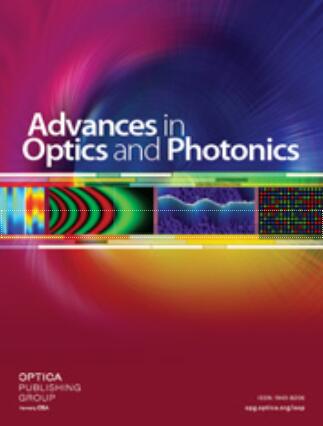一对量子发射器通过连续荧光测量的纠缠:教程
IF 23.8
1区 物理与天体物理
Q1 OPTICS
引用次数: 6
摘要
我们提出了一种测量协议,通过对两个远程量子位自发发射的联合零差检测,在它们之间产生量子纠缠。我们提出的正交测量方案是对现有实验的一种现实的两量子位扩展,现有实验通过对超导量子位的自发发射进行同频或外差来获得量子轨迹。我们为两个量子位的情况开发了一个模型,并模拟了各种测量协议的随机量子轨迹;我们使用该工具将我们提出的零差方案与可比较的基于光检测的贝尔状态测量和基于外差检测的方案进行比较。我们在各种示例测量中详细讨论了量子轨迹和并发动力学。与先前已知的基于测量的纠缠策略一样,我们的量子位之间的纠缠产率对应于我们从信号中擦除区分某些两个量子位状态的信息的能力。我们证明,在我们的零差检测方案下,路径信息获取的光子以及纠缠产率是可调的,与在可比较的光电检测情况下一样,产生最佳等效平均纠缠动力学。相比之下,在混合荧光信号后的每个输出处的外差检测使得这种信息擦除不可能,并且量子位之间不产生纠缠。本文章由计算机程序翻译,如有差异,请以英文原文为准。
Entanglement of a pair of quantum emitters via continuous fluorescence measurements: a tutorial
We propose a measurement protocol to generate quantum entanglement between two remote qubits, through joint homodyne detection of their spontaneous emission. The quadrature measurement scheme we propose is a realistic two-qubit extension of existing experiments which obtain quantum trajectories by homodyning or heterodyning a superconducting qubit's spontaneous emission. We develop a model for the two qubit case, and simulate stochastic quantum trajectories for a variety of measurement protocols; we use this tool to compare our proposed homodyne scheme with the comparable photodetection-based Bell state measurement, and heterodyne detection-based scheme. We discuss the quantum trajectories and concurrence dynamics in detail across a variety of example measurements. As with previously known measurement-based entanglement strategies, the entanglement yield between our qubits corresponds to our ability to erase information distinguishing certain two-qubit states from the signal. We demonstrate that the photon which-path information acquisition, and therefore the entanglement yield, is tunable under our homodyne detection scheme, generating at best equivalent average entanglement dynamics as in the comparable photodetection case. By contrast, heterodyne detection at each output after mixing fluorescence signals makes this information erasure impossible, and generates no entanglement between the qubits.
求助全文
通过发布文献求助,成功后即可免费获取论文全文。
去求助
来源期刊

Advances in Optics and Photonics
OPTICS-
CiteScore
56.60
自引率
0.00%
发文量
13
期刊介绍:
Advances in Optics and Photonics (AOP) is an all-electronic journal that publishes comprehensive review articles and multimedia tutorials. It is suitable for students, researchers, faculty, business professionals, and engineers interested in optics and photonics. The content of the journal covers advancements in these fields, ranging from fundamental science to engineering applications.
The journal aims to capture the most significant developments in optics and photonics. It achieves this through long review articles and comprehensive tutorials written by prominent and respected authors who are at the forefront of their fields.
The journal goes beyond traditional text-based articles by enhancing the content with multimedia elements, such as animation and video. This multimedia approach helps to enhance the understanding and visualization of complex concepts.
AOP offers dedicated article preparation and peer-review support to assist authors throughout the publication process. This support ensures that the articles meet the journal's standards and are well-received by readers.
Additionally, AOP welcomes comments on published review articles, encouraging further discussions and insights from the scientific community.
In summary, Advances in Optics and Photonics is a comprehensive journal that provides authoritative and accessible content on advancements in optics and photonics. With its diverse range of articles, multimedia enhancements, and dedicated support, AOP serves as a valuable resource for professionals and researchers in these fields.
 求助内容:
求助内容: 应助结果提醒方式:
应助结果提醒方式:


